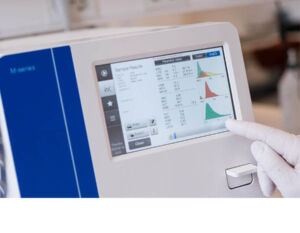Inflammation indices elevated in patients with STEMI and type 2 diabetes
Inflammation indices, such as the systemic immune-inflammatory index (SII) and the neutrophil-to-lymphocyte ration (NLR), can be useful in monitoring low-grade inflammation in patients at risk of developing cardiovascular disease (CVD).

Inflammation assessment to improve outcomes
CVD, such as ST-elevation myocardial infarction (STEMI), significantly contribute to morbidity and mortality worldwide (1). Diabetes has been found to be the most common risk factor for the development of CVD, including STEMI (2). The association of diabetes with CVD has been attributed to factors such as oxidative stress and low-grade inflammation (3). Assessing oxidative stress and inflammation in patient at elevated risk of developing CVD can therefore enable early diagnosis and initiation of therapies to improve outcomes.
Inflammation markers reflecting the systemic (chronic) inflammation state have been used as predictors of CVD and poor outcomes. In a study by Bielinskyi and Seredyuk at the Ivano-Frankivsk National Medical University in Ukraine, the correlation of inflammation indices in STEMI patients with and without type 2 diabetes mellitus (T2DM) was investigated using the Medonic M32 hematology system (3). The researchers found inflammation markers such as the SII, calculated as neutrophils × platelets/ lymphocytes, and the neutrophil-to-lymphocyte ration (NLR) to be significantly linked to T2DM in patients with STEMI.

CBC offers cost-efficient inflammation monitoring
A complete blood count (CBC) is a cost-efficient analysis compared with many other biomarker tests, and therefore readily available in laboratories worldwide. Different indices of the reported parameter each provide a different perspective on the state of the immune system. While the NLR and platelet-to-lymphocyte ratio reflect the balance between pro-inflammatory and anti-inflammatory cells in circulation, the SII and the systemic inflammation response index (SIRI), calculated as neutrophils × monocytes/lymphocytes, provide a more comprehensive assessment of the systemic inflammatory state (3). Bielinskyi and Seredyuk found SII to be an even better predictor of T2DM compared to other inflammation markers evaluated.
Compared with sending samples away to a central laboratory for analysis, on-site CBC testing using available benchtop hematology analyzers can provide results within a minute for an early suggestion for a diagnosis and initiation of treatment, ultimately to improve patient outcomes.
Reade more
Learn more from the white paper about the use of CBC in investigation of infections.
References
1. Stătescu et al. From Classic to Modern Prognostic Biomarkers in Patients with Acute Myocardial Infarction. Int J Mol Sci 23, 9168 (2022).
2. Rotariu et al. Oxidative stress – Complex pathological issues concerning the hallmark of cardiovascular and metabolic disorders. Biomed Pharmacother DOI: 10.1016/j.biopha.2022.113238 (Epub 2022).
3. Bielinskyi and Seredyuk. Association of markers of low-grade inflammation in patients with st-elevation myocardial infarction with type 2 diabetes mellitus: a comparative analysis. Bukovinian Medical Herald 27, 53–60 (2023).
